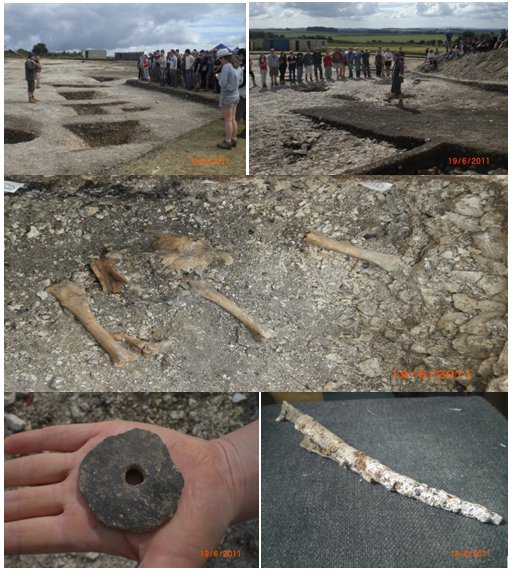The most intriguing development on site is the identification of numerous examples of cow and horse bones placed together. An example that was discussed previously was of a cow skull buried with a horse mandible. Similar deposits are being found all across the site. This phenomenon was addressed in detail by Miles Russell in his weekly site brief this morning. In area ‘A’, several limbs and skull of a cow are being excavated with horse remains associated, and in one instance a cow scapular found lying directly on top of articulated horse vertebrae was incorporated during the filling in of the ‘banjo’ enclosure ditch near its entrance when it went out of use.
Miles Russell confirmed to us that the date and interpretation of human activities at this site is being ‘tightened up’ but further datable finds, which will hopefully be discovered from the primary silts of the ‘banjo’ ditch to be certain. Current evidence is suggesting a date of occupation to 400-200BC. It is still unknown whether some the external pits to the ‘banjo’ ditch were in use before or after the occupation of the ‘banjo’ enclosure itself.
Trench ‘D’ is still being excavated to define the Roman building feature. However, some are extending outside the trench – could this mean another season at Winterbourne Kingston?
